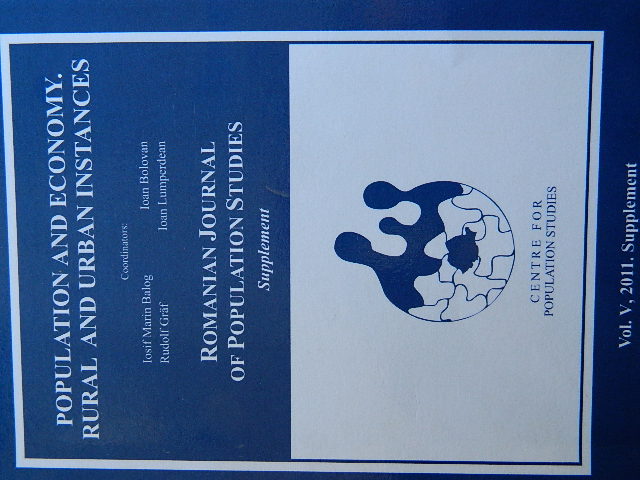Einige Bemerkungen zur ökonomischen und sozio-demographischen Situation in den siebenbürgischen Städten (1850-1914)
Some considerations about economic and socio-demographic realities in Transylvanian towns (1850-1914)
Author(s): Ioan Lumperdean Subject(s): History
Published by: Centrul de Studiere a Populaţiei
Keywords: town; urban economy; urban population; Transylvania; modernization
Summary/Abstract: The author performs an analysis of structural changes occurring in Transylvanian towns in the period 1850-1914 from an economic and social point of view. The approach belongs to the range of themes of economic and demographic history, dealing with Transylvanian urban economy and civilization in a period of profound transformations and modernizing options. The author attempts to capture the main features of Transylvanian society, determining factors of the urban space but also the response of the latter to the requirements and dilemmas of tradition and modernization. Moreover, by establishing correlations with results in the sphere of urban economy research, the paper analyzes the importance of the town as a territorial, economic, socio-demographic and institutional reality. Another goal of the study is to find historical landmarks allowing the establishment of a functional relationship between the past, present and future of urban economy by explaining the topicality and repeatability of economic facts and phenomena. The conclusion is that towns in the 1850-1914 period preserve the medieval tradition that generated and protected them in the multiethnic and multicultural Transylvanian space, from the Middle Ages to the nineteenth century. In the dialogue and struggle between tradition and modernity, two processes take shape and preeminence: citadinization and urbanization. The former means a quantitative increase of population and urban structures whereas the latter involves qualitative transformations that include the forms of economic, social, cultural, administrative-institutional life specific to urban areas. Both processes * This work was supported by CNCS-UEFISCDI, project PN II _IDEI code 2405/2008. 8 · Romanian Journal of Population Studies · vol. V, 2011. Supplement were slow, long, with exogenous rather than endogenous aspects; the former were restrictive and prohibitive architecturally, socially and ethnically. The paper punctually presents some problems that define, explain and characterize Transylvanian towns in the period 1850-1914. The author points out the fact that a more comprehensive approach can reveal other aspects of urban activity, aesthetics, and functionality, from an economic, demographic, habitational, educational, ecological, etc. point of view, and the journey into urban past may help us better understand present and future challenges of urban civilization.
Journal: Romanian Journal of Population Studies
- Issue Year: 5/2011
- Issue No: Supplement
- Page Range: 7-30
- Page Count: 24
- Language: German
- Content File-PDF

